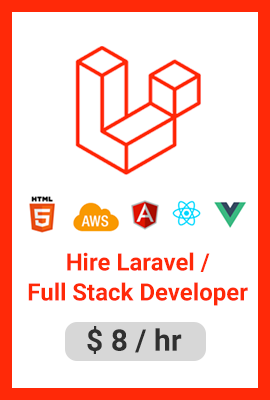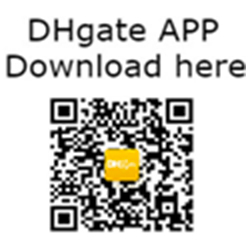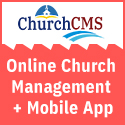The need for acquiring an Application Lifecycle Management (ALM) software tool has been gradually rising over the years among companies. It has helped in streamlining software development processes by increasing product complexity and maintaining higher quality software.
An ALM toolset or software suite has various components covering the software progressions from the development stage to the release process. Companies like Icreon that specialize in software development have recognized the benefits an ALM suite could bring to their customers. The company incorporating ALM in their software development has helped them stay ahead of the competition curve.
Although switching to an ALM suite is the right decision, there are challenges finding one that best suits your needs. Application Lifecycle Management tools vary in capability and sizes. With several sellers and products, choosing an ALM suite can be a difficult task. There are, however, necessary tool abilities and service offerings your ALM tool needs to have. Below are some of the key capabilities and features to look for in an ALM suite.
Collaboration Features
An ALM tool’s collaboration features are chat functionality, wikis, versioning, and historical documentation of numerous user updates. These features enable collaboration, which is a basis for an ALM framework. Collaboration, therefore, is an important feature of ALM suites.
Company’s Specific Considerations
When selecting an ALM tool, it is important to consider the company’s demographics. This includes the size, industry type, and type of projects. An example is if a company is involved in reporting or complying with regulations authorities, ALM tools that provide features for handling risk management, traceability, and regulatory reporting are essential. If the organization has invested in a certain vendor or enterprise, then an ALM tool designed to work well with those teams may be the best option.
License And Cost
What the vendor offers also plays a role in the selection process. Licensing and cost is a vital factor when considering purchasing an Application Lifecycle Management tool. There need to be sufficient licenses to accommodate the available number of users since Application Lifecycle Management tools are centered on various teams’ collaborations. Due to this, small organizations with small budgets need to forego features and prioritize cost while choosing an ALM tool.
Moreover, some licensing configurations are based on the locality of the user. Offshore seats are more expensive than onshore seats.
Also, it is possible to buy a company or site license. Purchasing this license is, however, not advisable for smaller organizations. Larger companies are more flexible in buying the whole team’s license and cover their cost.
Ensure you research on a specific license and its cost to get one that best suits your organization.
Hosting or Support
There are hosting platforms that enable partners or vendors to support and train organizations on ALM suites or tools. Hosting should be taken into account while choosing the right Application Lifecycle Management tool. However, most ALM tools offer on-premise services. With hosting and support, you can make the best out of your chosen ALM tool.
Managing the Deployment Process
Configuration, version control, and release management are features that must be incorporated to complete an ALM framework. They are essential for companies that are continuously integrating and delivering. Also, Application performance monitoring is an integral part of the release process found in most ALM tools.
Match Features With Necessities
When an organization recognizes what they need, they have to analyze most ALM tools’ features. Most features of an ALM are in different tools. However, some salespersons provide a set of integrated tools that features most elements of ALM. On the other hand, other vendors have niche products that provide comprehensive functionality and integrate with other tools.
With the organization’s objectives in mind, it is helpful to review the features of ALM components. Ensure to look for tools that have significant functions in areas of the organization that are not well established. If there are tools already being used, go for ALM tools that can incorporate these tools. The following are some of the tools that should match with the company objectives.
Project Management Tools
These tools are responsible for managing multiple teams and projects. They also report cross-projects. These are regular reports and great methods of creating custom reports. Essential features of portfolio management tools comprise financial, demand, and resource management. Planning and scheduling your work are also useful management features. An ALM suite should incorporate both the software development lifecycle tool and portfolio management tool.
Portfolio management tools often focus on Waterfall methodologies or Agile methodologies. Agile-focused tools include user stories and task estimation, build-up, release and duplication management, and an electronic whiteboard. Agile based tools also report capabilities.
Requirements Management Tools
These include features such as generating workflows, prototyping and changing data formats. The most important functions of this tool are traceability and test cases and codes and alteration management. Alteration management is showing the effect of potential changes on other test cases and requirements. Change management enables decision making and ensures reliable test cases.
Assessment and Quality Management Tools
They integrate with requirements managing tools to ensure traceability. Tracking starts from requirements to test cases, then to defects and back again to requirements.
Other features like security management, vulnerability scanning, impact analysis, and penetration testing are also important. They are suitable for companies working with mission-critical applications, private data, or financial data. Integration with other tools is often a make-or-break test because some teams already have partial solutions. They will, therefore, be hesitant to give up the tools.
When choosing the best ALM tool suite, you need to do research and weigh your options. All stakeholders’ participation is also essential to make the task easy. Ensure you identify the company’s objectives and demographics, then choose an ALM suite that improves your goals. Considering the above key features of an ALM software tool will ensure your business success. If you’re looking for software companies in New York, give the team at Icreon a shout. They have a track record of guiding businesses with App Lifecycle Management.















